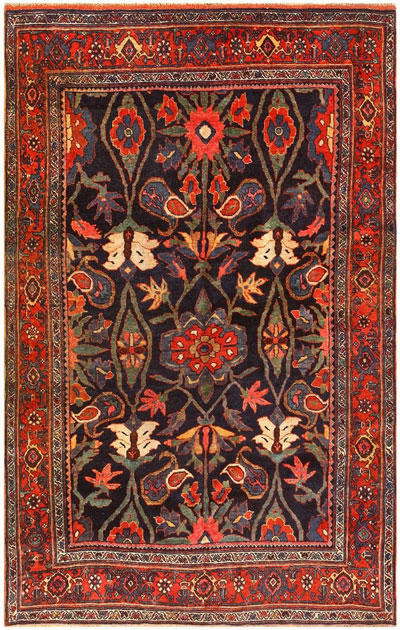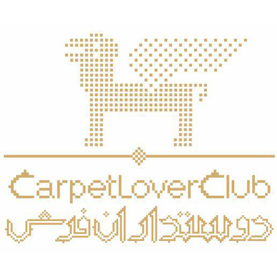bijar handmade carpet history: beautiful and duable heritage from past
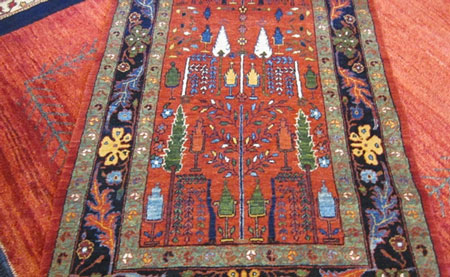
Bijar is a market center in Northwestern Iran, about 150 miles south of Tabriz. The flat, dusty town of Bijar (Bidjar) and the surrounding countryside are populated mainly by Kurds, whose artistic sense and culture is clearly seen in the region’s grand antique carpets. A small city of 20,000 at the turn of the century, Bijar (Bidjar) was the center of a major weaving area. Superbly crafted rugs were produced in the small workshops of Bijar (Bidjar) itself, the finest of the area size rugs being called “Halvai.” Many of the best antique Bijar (Bidjar) rugs, especially the largest antique carpets, have been commissioned by Westerners and the Persian nobility for the last several hundred years. Spontaneous, asymmetric antique tribal carpets were woven at the family level throughout the surrounding countryside. Bijar (Bidjar) carpets are world renowned for their superb artistry, craftsmanship, and excellent material, and can be distinguished by their heavy wool foundation (cotton in twentieth-century carpets). As the weaver tied each row of knots, she added an extra weft and literally pounded down the knots. The stiff, heavy foundation that is thus created allows antique Bijar (Bidjar) carpets, known as “the iron rugs of Persia,” to withstand up to 200 years of heavy use. The diverse antique Bijar (Bidjar) rug color palette, from soft to emerald greens, a full range of blues and yellows to fiery rich red, tomato or deep terra cotta, demonstrates the great skill of its dyers. The examples woven by Kurdish women in the small surrounding villages display an exceptional level of spontaneity. Known as “Kurdish Bijar” to differentiate them from the more finely woven and formal “Bijar” (Bidjar) style, the best examples use strong abrash, or tonal changes within one hue, and sometimes radical changes in design. They have the same superb wool and color range as the more finely woven city Bijars (Bidjar). The culmination of a centuries-old weaving tradition, the finest Bijar antique rugs woven 1900 or before are grand works of refined art, yet they possess tribal elements in their design and coloration which are not found in any other city rugs. They are highly respected by collectors and rug enthusiasts for their uniqueness, strength of construction and great decorative impact. They are commonly compatible with a wide range of traditional and contemporary
bijar carpet: fish(herati), Guli Farang and Garrus pattern
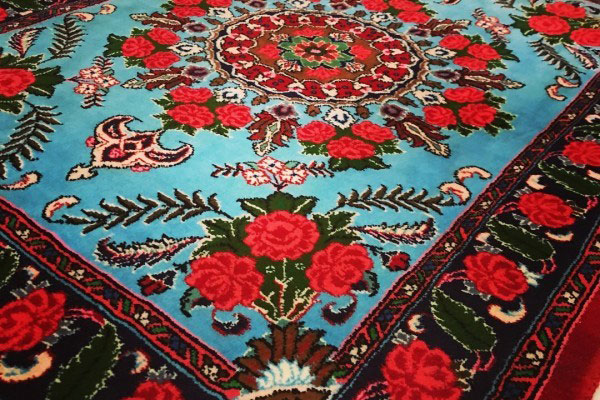
The region’s weavers have transformed many classic antique carpet designs with their own interpretations. “Mina khani” and “Herati” Persian carpet designs (both highly detailed, overall repeats) and a diamond-shaped medallion were frequently used. An anchor-like design is found in many antique Bijar (Bidjar) rugs at the vertical ends of the medallion or as the pendant motif. Stylized allover flower and vinery motifs are also found in the small Bijar (Bidjar) village pieces and larger city carpets alike. Two particularly rare and prized carpet designs are “Garrus” and “Guli Farang.” The Garrus design usually employs a cobalt to midnight indigo blue field and a distinctive large scale all-over pattern of split-arabesques and blossoming vinery in the field, along with a ribbon-like, serpentine and cloudband repeat in the main border. The Guli Farang, antique carpet pattern is also an all-over repeat, that many believe to be a stylized depiction of cabbage blossoms or an English formal garden. In pieces woven before 1900, this motif usually is performed against a dark blue or ivory ground.
why bijar handmade carpet is named iron carpet
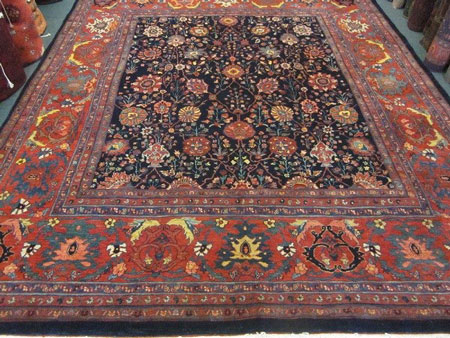
Since time immemorial, Bijar weavers have used a weaving technique that many professionals are not aware of being used anywhere else in Iran or any other of the rug weaving countries. Bijar rugs are woven with a Turkish knot (sometimes called a Gordies knot) with one or two wefts inserted between each row of knots. After they have tied a row of knots, the weaver then inserts a weft. (Wefts are the threads of yarn that are inserted crosswise to secure the knots in place.) The difference between the construction of Bijar rugs and other Oriental rugs is that before a weft is inserted it is dampened with water. The dampened weft now has a pliability that it would not normally have. After the weft has been inserted horizontally, a comb is used to beat it down vigorously next to the tied knots. This creates a dense, tightly woven fabric as when the weft dries, it shrinks somewhat resulting in a very firmly constructed foundation. Foundation in rug nomenclature is refering to the warps and wefts. In the small villages outside the town of Bijar, where the very best Bijar rugs are currently being made, many of the weavers are using cotton wefts but there are a few that do use wool. This is how all antique Bijars were woven and in current production, the very best quality Bijars. They are woven with hand spun Persian wool, dyed with vegetable dyes and the design inspirations are taken from antique rugs. Bijar rugs are often called the “Iron Rugs of Iran” for the simple reason they are tightly woven and yet have tremendous body, thickness and are extremely hard-wearing. A Bijar rug will often be heavier than another tribal rug of the same size and the very best ones have clear, detailed designs in beautiful colors.
bijar handmade carpet at a brief glance
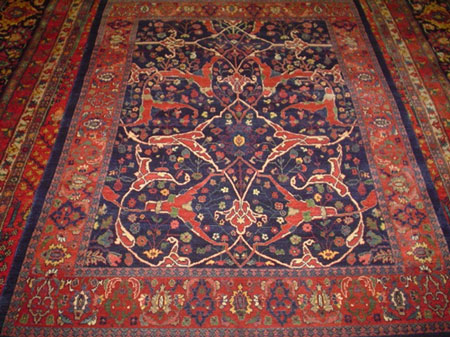
BIJAR Persian Rugs Properties are:
- Visibility:Herati and ;Mina Khani designs are very common in BIJAR Kurdish rugs. You can also find medallion and all-over patterns with multiple borders.
- Quality:BIJAR carpets are counted among the best oriental carpets for everyday use because they are extremely tough and rigid. Modern BIJAR workshop carpets are still of excellent design and construction.
- Size & Shapes:BIJAR carpets come in different sizes , especially from about 1 x 1.50m (3′ 3″ x 4’x 11″) upwards. Large pieces of over 12 square meters (51 square feet) are common.
- Color:Ground colors are harmonious, a product of the blending of subtly shaded patterns. Dark blue and a strong red Brown and yellow are also used, but green is rare. Some old BIJARs are woven with combinations of light and dark blue.
- Texture:A very dense hard pile, cut medium to high, though old and antique finely woven pieces tend to be clipped lower.
- Foundation: Warp is of cotton or, less frequently, goat’s wool. Weft is cotton and both warp and weft yarn is tightly spun. In old and antique pieces, warp and weft are of wool.
- Knots:The majority of BIJAR rugs have Turkish knots. However, Persian knotted pieces are also found.
- Price: BIJAR carpets and rugs are beautiful and there is a high demand for them, so a nice BIJAR is more expensive than similar carpets from the surrounding area.
